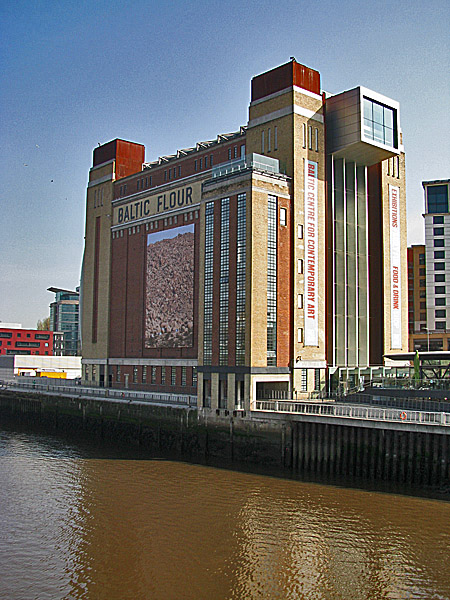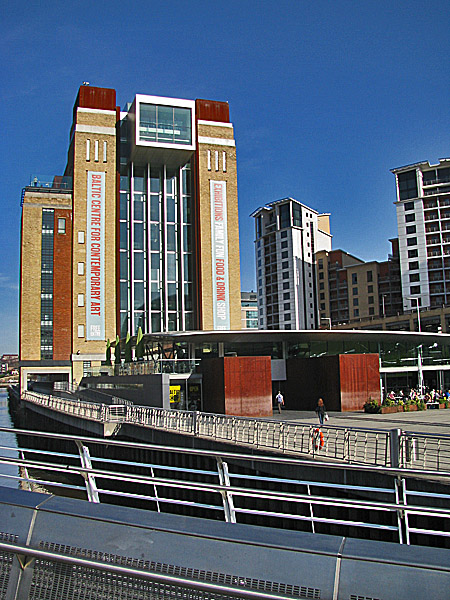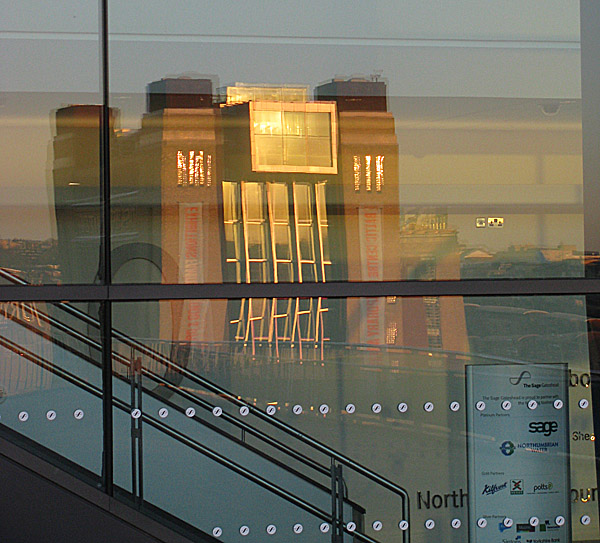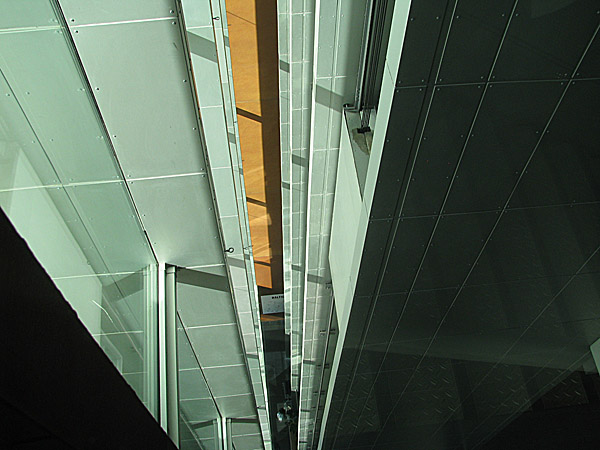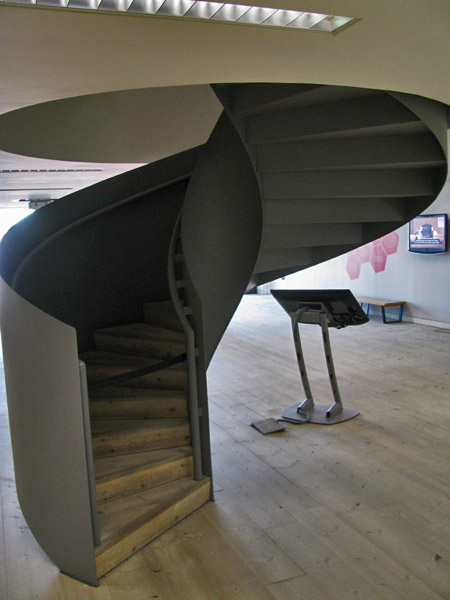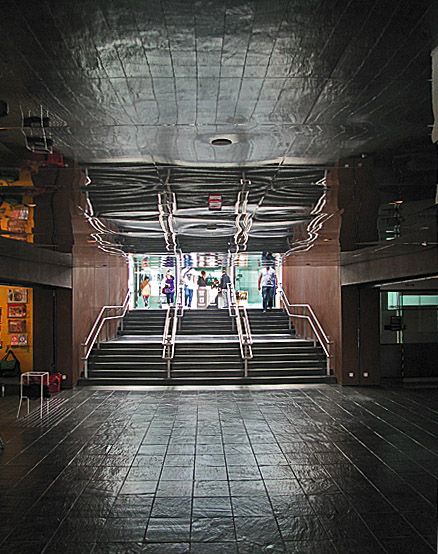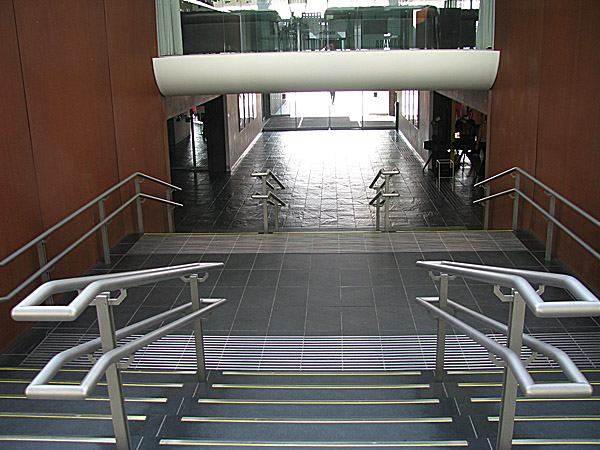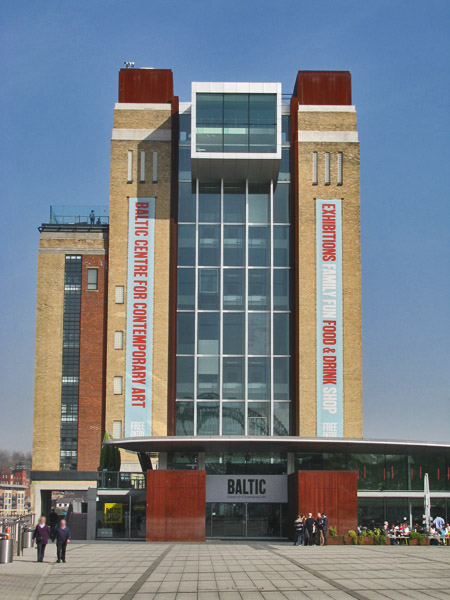| Architect |
Gelder and Kitchen -
completed 1950s Ellis Williams - 2002 |
| Location |
The Baltic sits beside the Millennium Bridge on the Gateshead side of the River Tyne. |
| Description |
|
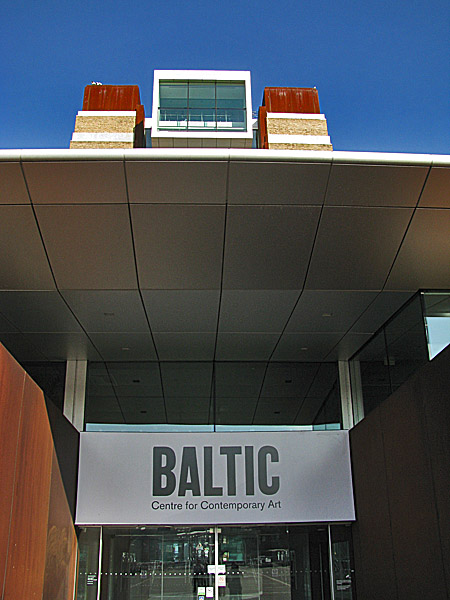 This contemporary art gallery occupies what was originally a flour mill owned by Joseph Rank Limited. 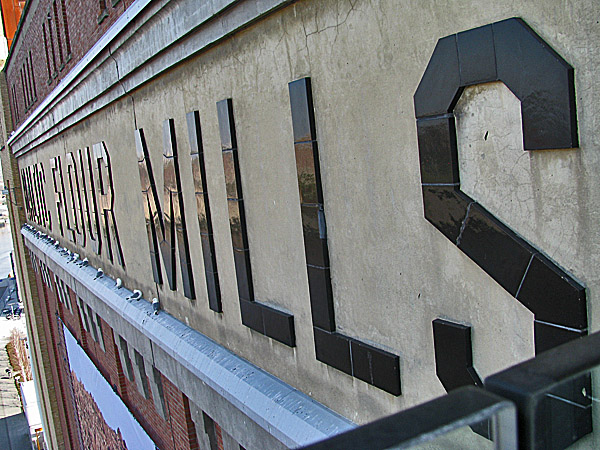 Construction of the mill, designed by Gelder and Kitchen of Hull, began before WWII but it wasn't completed until the 1950s. In its day the flour mill employed approximately 300 people but it closed in 1982 and fell into neglect and disrepair. The restoration and refurbishment of the building began in the 1990s and involved the demolition of all but the north and south facing façades between which six main floors and three mezzanines were erected. Today, it is home to gallery and performance spaces, as well as a ground floor cafe, a rooftop restaurant, a shop, a cinema/lecture space, a library and artist studios. Along with its neighbour the Sage Gateshead, the Baltic has become a major tourist attraction and an important addition to the artistic life of the Northeast. Ellis Williams, the architects responsible for the creation of The Baltic say that, "One of the main themes running through the design evolution was to retain the verticality of the existing building and build on its idiosyncratic and dominant presence on the river front. The views out from the building to the surrounding cityscape are captured by a number of internal and external viewing areas, rooftop restaurant and bar and by the glass elevators servicing the building." The "20th Century Architecture in
Newcastle upon Tyne" website describes the
entrance to The Baltic as, " ... low and dark. Red rusted
Cor-Ten steel panels, the same used in the
Angel of the North, line the entrance. As
you pass through the space the sky opens
up and encourages your gaze to flow upward
syncing with the vertical dynamic of the
structure. Sune Nordrogren links this
entrance to ‘entering a ferry’."
"When the feasibility study of the Baltic was published it became apparent that the Baltic had some of the best urban views of the North East. The viewing boxes looking both East and West have exploited this."
|
|
The Baltic,
Gateshead , UK
